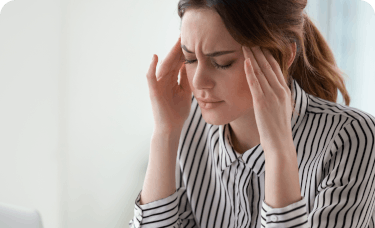Some kids hate them; some adults crave them. But are naps effective, really?
It’s hard to doubt the importance of a good night’s sleep — the act helps us improve focus, react more quickly, and even create memories. Headache sufferers may be more aware of this than most, since irregular sleep patterns may trigger both headaches or migraines in some.
But we totally get it — a good night’s sleep can sometimes be elusive. But can naps fill the void? Here’s what the research says.
What’s so great about a nap?
Napping can reduce fatigue; increase alertness, creativity and learning; improve mood, and even affect your memory.1
More studies about the benefits of napping are needed, but a very small and early study on the subject showed that a 60-90-minute nap helped study participants better perform at a task later in the day than the group that didn’t take a nap. What this might suggest is that a nap could help mastery of a new task. Early findings also suggest that a nap that contains REM (rapid eye movement) sleep could enhance performance as much as a normal night’s sleep, but more studies are needed.2









